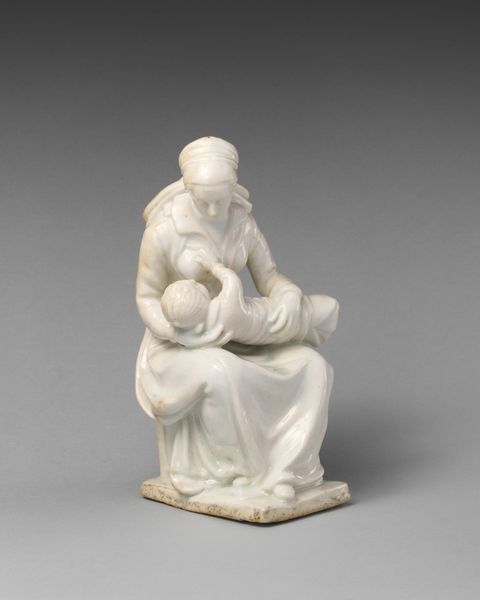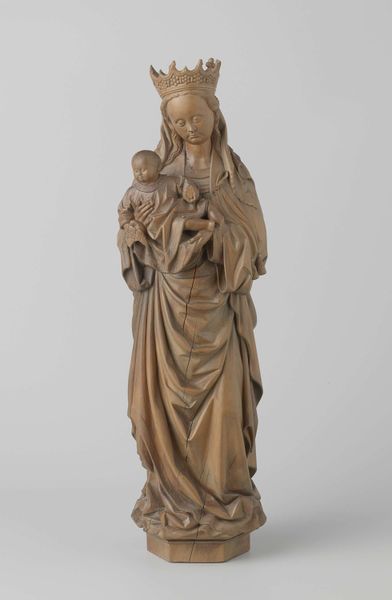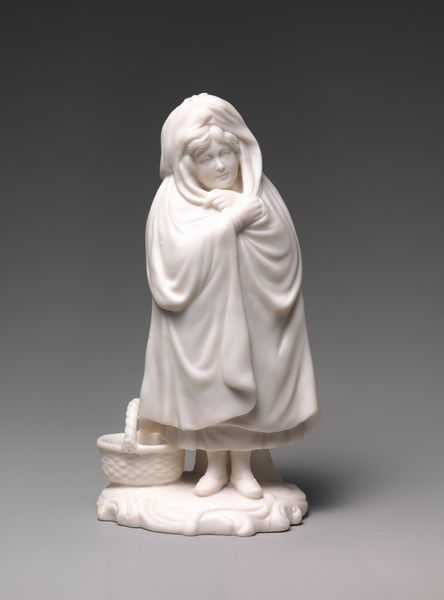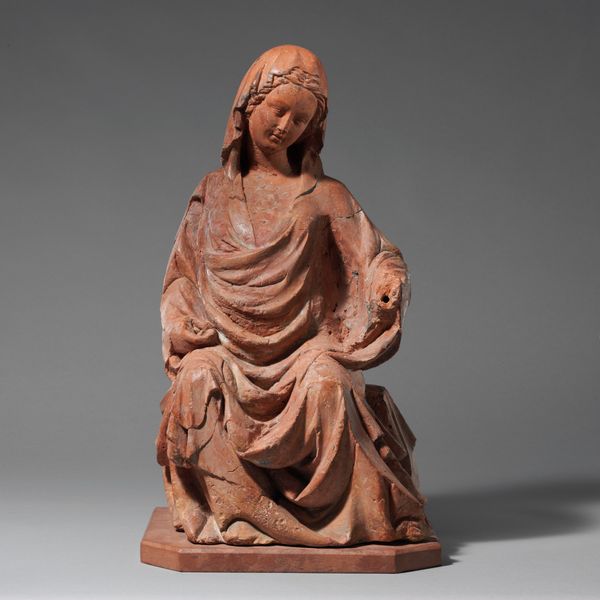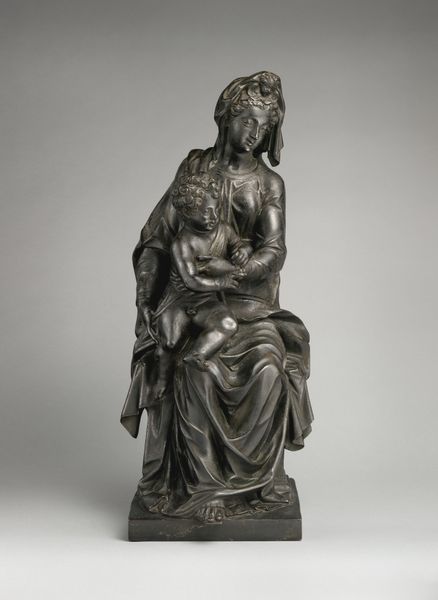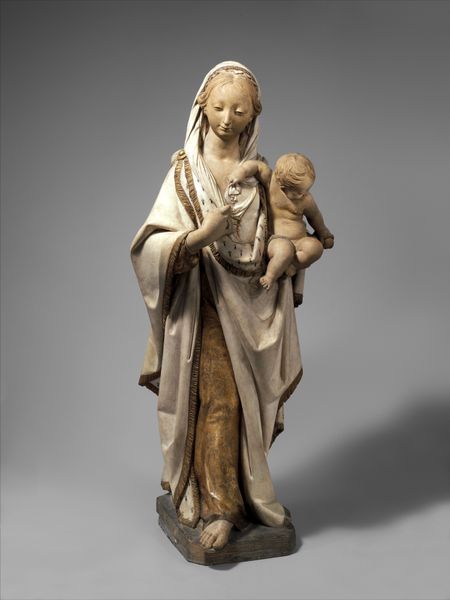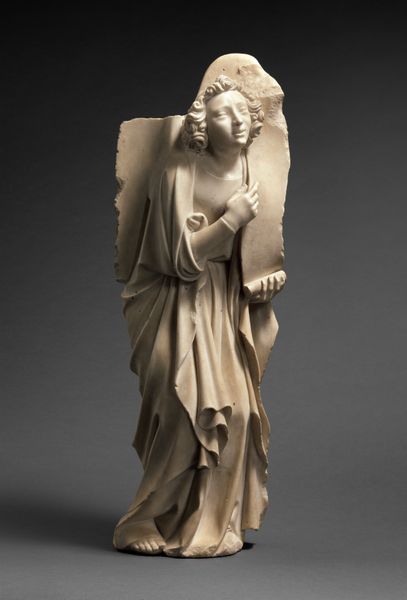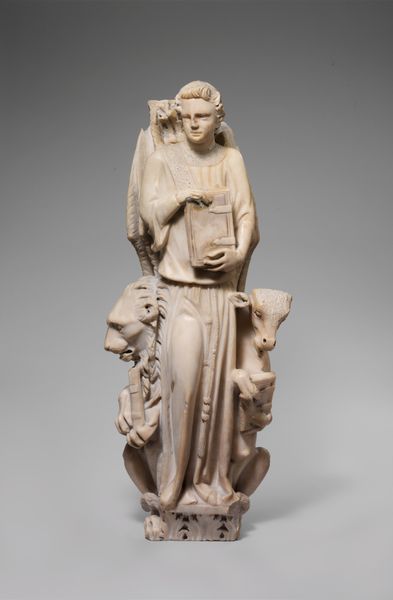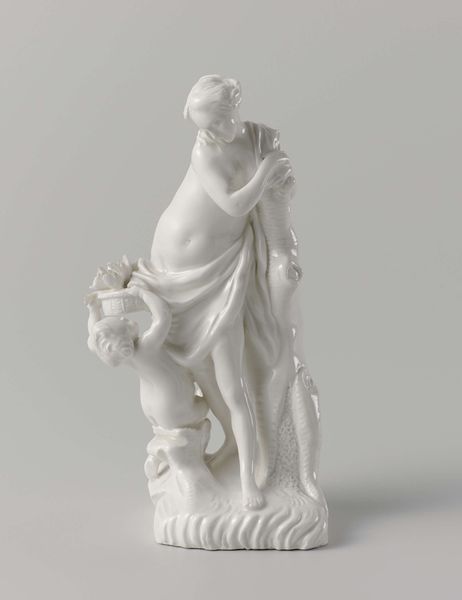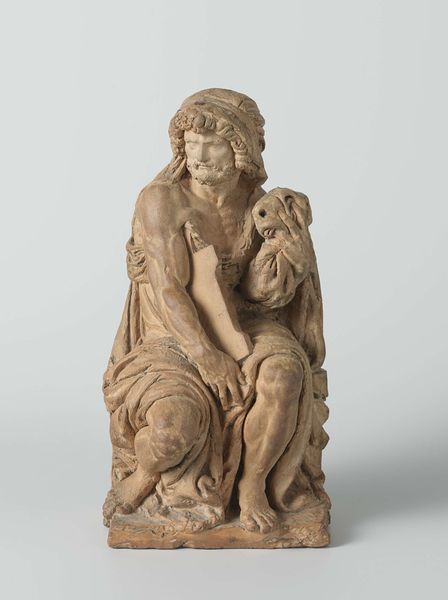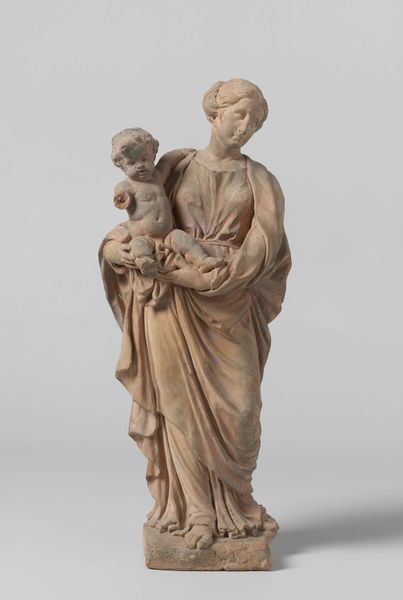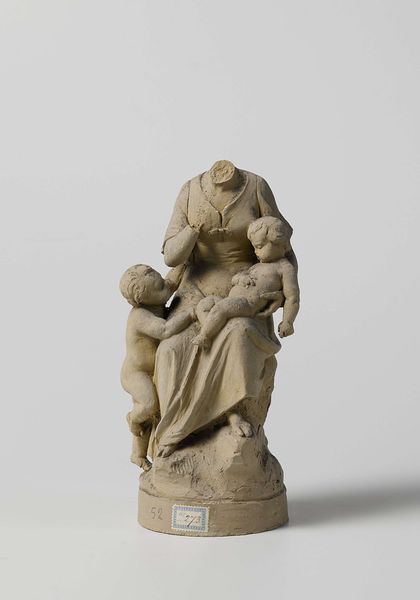
ceramic, sculpture
#
portrait
#
baroque
#
ceramic
#
figuration
#
sculpture
#
character design
#
child character design
#
men
#
genre-painting
#
decorative-art
Dimensions: Height: 9 in. (22.9 cm)
Copyright: Public Domain
Editor: We are looking at "La Nourrice," or "The Nurse," a 17th-century ceramic sculpture by Guillaume Dupré. The colors are so gentle and the scene is very tender. What historical forces shaped the public role of this work? Curator: This intimate scene is quite telling when placed within the social history of childcare. Before modern sanitation and healthcare, infant mortality was high. Elite women often relied on wet nurses. Consider this sculpture as potentially fulfilling several functions within that system. It celebrates motherhood, surely, but more importantly, it subtly reinforces the social and economic realities of the time. The sculpture romanticizes a practice heavily reliant on class distinctions. Doesn’t it strike you as interesting how carefully the details are rendered, and what they leave out? Editor: It's interesting that you point out the class issues. So, is this piece offering commentary, or is it participating in the cycle? Curator: That's precisely the question, isn’t it? Genre scenes like this gained popularity among the rising merchant class. They reflected and, simultaneously, constructed ideals of domesticity and social order. Think about the power dynamics inherent in the depiction. The sculpture presents a sanitized, perhaps idealized, version of wet nursing, ignoring the very real economic precarity of these women and the emotional toll on the children involved. What do you think, is it glorifying the everyday, or cementing a certain social hierarchy? Editor: I now see it more as a reflection of society's values and perhaps its shortcomings. Thanks, I learned so much! Curator: It's fascinating how a seemingly simple scene can reveal such complex social narratives, isn't it?
Comments
No comments
Be the first to comment and join the conversation on the ultimate creative platform.
